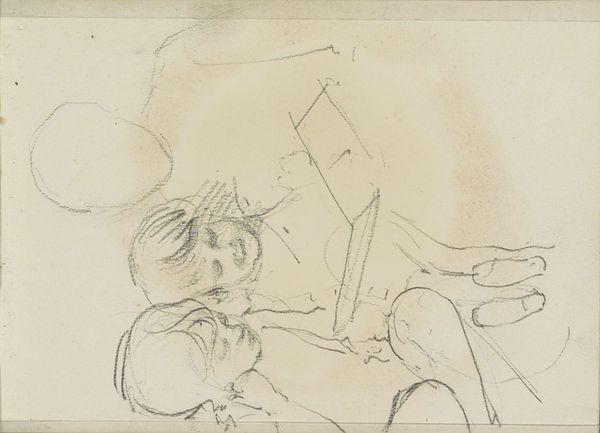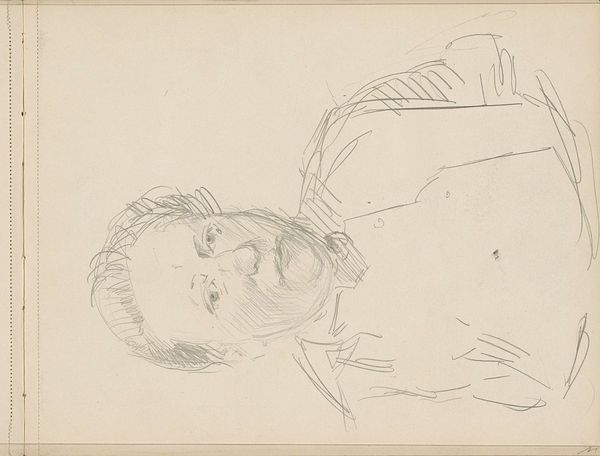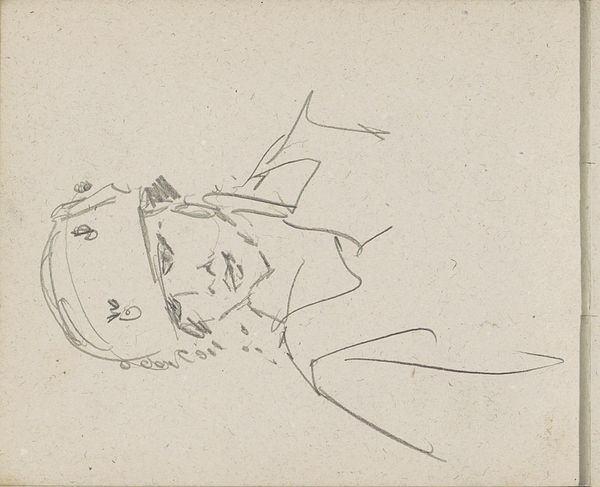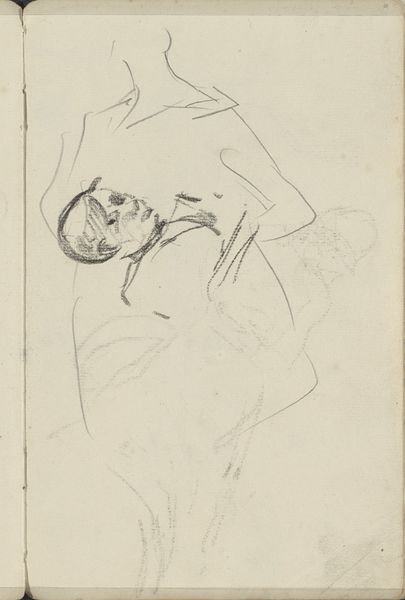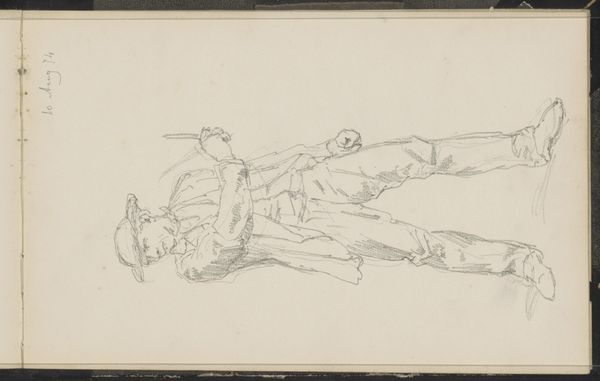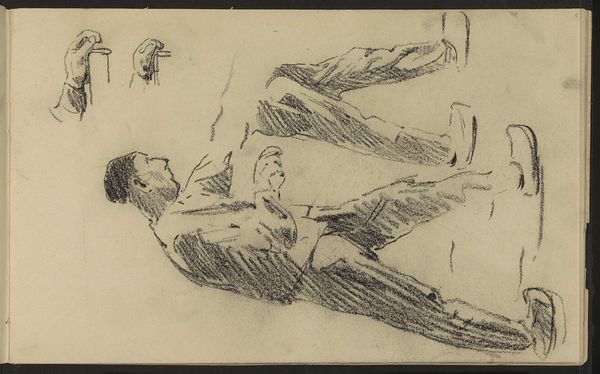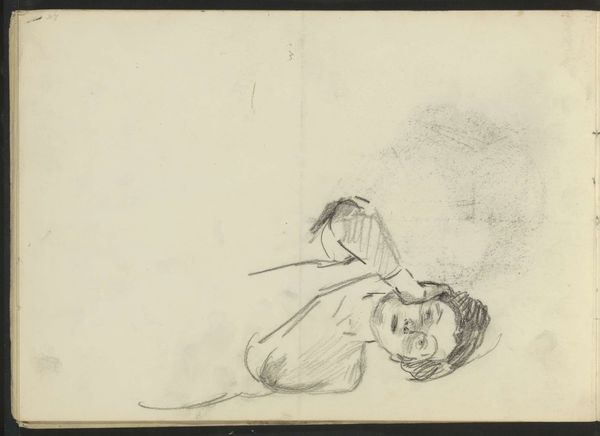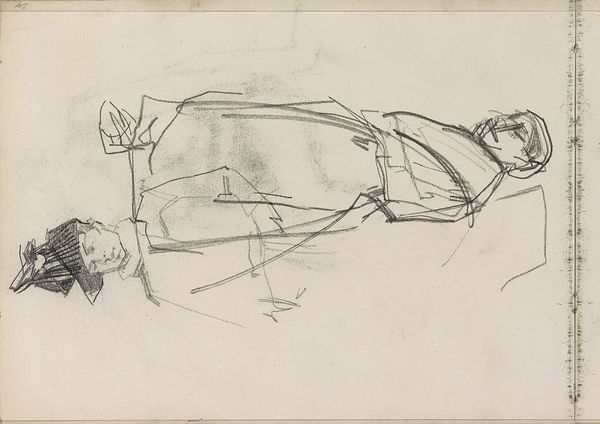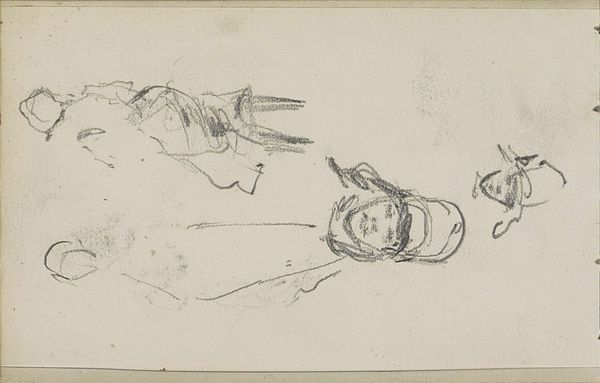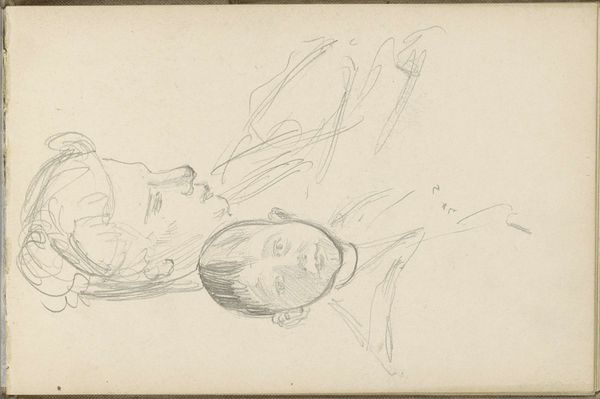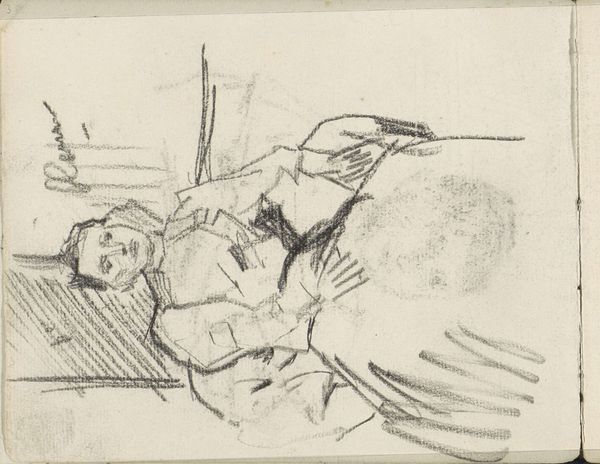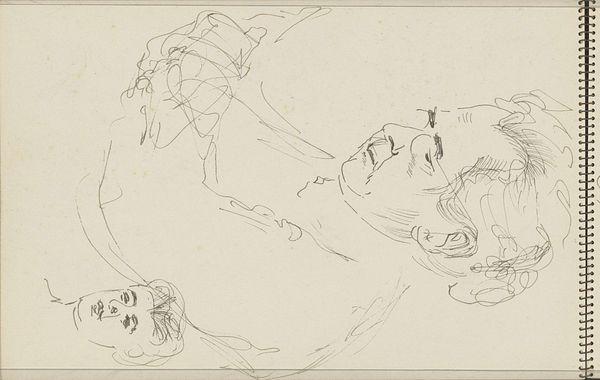
Figuurstudies en een portret van de scheepsarts dr. W. Hamaker 1880 - 1886
0:00
0:00
drawing, graphite
#
portrait
#
drawing
#
graphite
#
genre-painting
#
realism
Copyright: Rijks Museum: Open Domain
Curator: I am struck by the immediate, almost frantic energy conveyed through the sketch work. The lines are incredibly dynamic, and they evoke a feeling of immediacy, as if we are witnessing the artist capturing a fleeting moment. Editor: That's an excellent point. Here we see Louis Apol's "Figuurstudies en een portret van de scheepsarts dr. W. Hamaker," created between 1880 and 1886. These are figure studies and a portrait of a naval doctor rendered in graphite on paper. For Apol, these sketches likely held a purpose, maybe preliminary observations that capture something larger, something maybe unseen. Curator: Well, let's talk about those formal elements a bit. What strikes you most about how Apol chose to depict the doctor? For me, it's the stark contrast between the tightly rendered face, suggesting the subject’s complex inner thoughts, with the loosely suggested sketch of his personhood or character in relationship with another. Editor: Right, and if we consider Apol’s own politics, it feels important to interpret the naval officer as part of a very specific nexus. He was Dutch, a member of a specific professional and social class at the apex of colonial power. There’s a tension between how he may have understood the individual man while necessarily indicting the role the doctor may have occupied in relation to colonial practices. Curator: And his choice of graphite emphasizes a kind of brutal, stark reality, unadorned, a tool to serve representation rather than to prettify it, for lack of a better term. It's less about aesthetic beauty, and more about truthful depiction. But I still question if this type of representation could ever exist within any historical-cultural representation that always comes up short. Editor: Certainly. And Apol’s realism lends itself to the belief in the neutrality of representation, which of course is complicated by what we bring to bear. Thinking about the context of the artwork within Apol’s larger oeuvre might tell us more. Curator: Indeed, and I find this juxtaposition— between the medium's bluntness and his almost sentimental style of that period--to be really quite fascinating. Editor: The figure, his place within that image's narrative; for Apol I suppose it was an intimate, personal attempt. For us looking back, we must consider the broader implications to better interpret such intimate representations and their positionality.
Comments
No comments
Be the first to comment and join the conversation on the ultimate creative platform.
